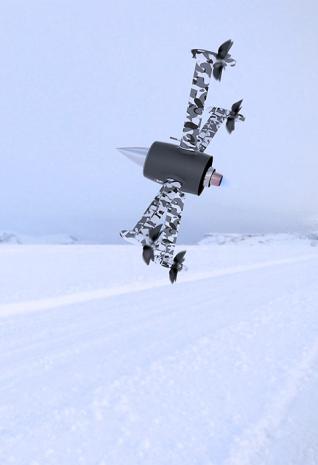
Breaking News
 Canada's MAID CULTURE OF DEATH Just Hit Rock Bottom: KILLING PRISONERS NOW!!!
Canada's MAID CULTURE OF DEATH Just Hit Rock Bottom: KILLING PRISONERS NOW!!!
 Weight gain single-handedly prevented by a gut microbe
Weight gain single-handedly prevented by a gut microbe
 Doug Casey on 2025's Defining Events and What Comes Next
Doug Casey on 2025's Defining Events and What Comes Next
 BREAKING: Officer Tatum & Other Investigators Believe A Potential Suspect In The Brown...
BREAKING: Officer Tatum & Other Investigators Believe A Potential Suspect In The Brown...
Top Tech News
 This tiny dev board is packed with features for ambitious makers
This tiny dev board is packed with features for ambitious makers
 Scientists Discover Gel to Regrow Tooth Enamel
Scientists Discover Gel to Regrow Tooth Enamel
 Vitamin C and Dandelion Root Killing Cancer Cells -- as Former CDC Director Calls for COVID-19...
Vitamin C and Dandelion Root Killing Cancer Cells -- as Former CDC Director Calls for COVID-19...
 Galactic Brain: US firm plans space-based data centers, power grid to challenge China
Galactic Brain: US firm plans space-based data centers, power grid to challenge China
 A microbial cleanup for glyphosate just earned a patent. Here's why that matters
A microbial cleanup for glyphosate just earned a patent. Here's why that matters
 Japan Breaks Internet Speed Record with 5 Million Times Faster Data Transfer
Japan Breaks Internet Speed Record with 5 Million Times Faster Data Transfer
 Advanced Propulsion Resources Part 1 of 2
Advanced Propulsion Resources Part 1 of 2
 PulsarFusion a forward-thinking UK aerospace company, is pushing the boundaries of space travel...
PulsarFusion a forward-thinking UK aerospace company, is pushing the boundaries of space travel...
 Dinky little laser box throws big-screen entertainment from inches away
Dinky little laser box throws big-screen entertainment from inches away
 'World's first' sodium-ion flashlight shines bright even at -40 ºF
'World's first' sodium-ion flashlight shines bright even at -40 ºF
Huntress hybrid drone packs a 300+ mph turbojet core

The Huntress II Turbojet is a large beast, measuring 4 m (13 ft) diagonally from rotor to rotor. It weighs around 50 kg (110 lb) depending on how much jet fuel it's carrying, and its maximum takeoff weight is 165 kg (365 lb), so it's able to carry a very beefy payload if required, in five avionics bays and up to four externally-mounted containers.
It's designed to be mission-ready in less than 90 seconds for quick deployment, whether launched from land or sea, or dropped out of a plane at up to 6,000 m (19,700 ft). Endurance is up to two hours, and operators can watch live video while controlling the aircraft at up to 30 km (18.6 miles) away.
Once it's airborne, well, you can hover and loiter it as a quadcopter, or you can fire up that jet turbine and let 'er rip in a kind of tailsitter configuration, although it's not immediately apparent how it'll steer as a jet, whether by using control surfaces on the rotor arms or by vectoring the jet thrust.
WaveAerospace doesn't specify rpm or horsepower for the turbojet, but says it'll easily do Mach 0.4 (300 mph/483 km/h). That top speed is electronically limited, and the company claims it'll look into loosening that restriction over time to let it cruise "much faster." The turbine can be started or stopped while the Huntress is airborne, so it needn't scorch the pad.
Importantly for many potential applications, it'll fly in nearly any weather conditions, up to and including Force 10 storm conditions with wind speeds up to 117 km/h (72 mph), and temperatures between -34 to 54 °C (-30 to 130 °F) . Basically, if a full-size helicopter can fly, the Huntress can too – just at around 5% the cost, and taking up half the space. If it's super windy on the launch pad, the company ways it'll use reverse thrust to hold itself down firmly until takeoff.



